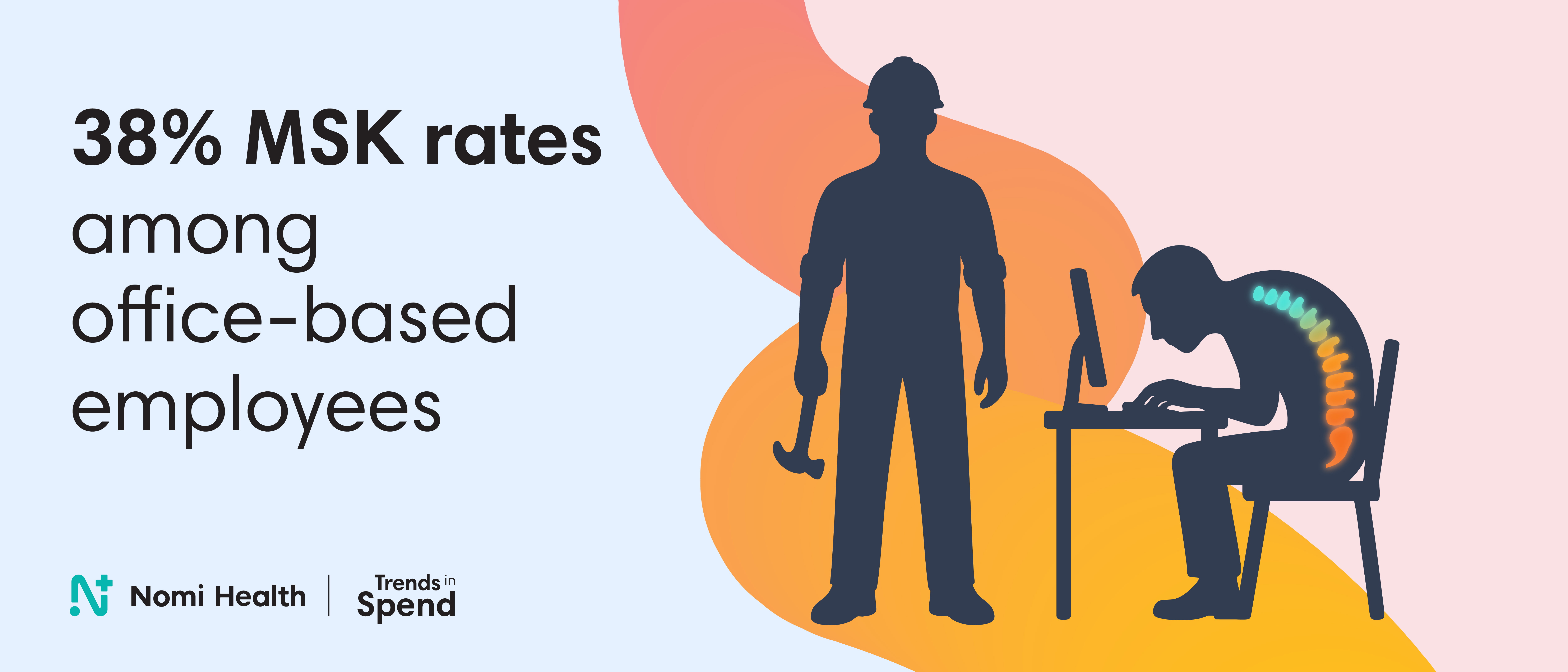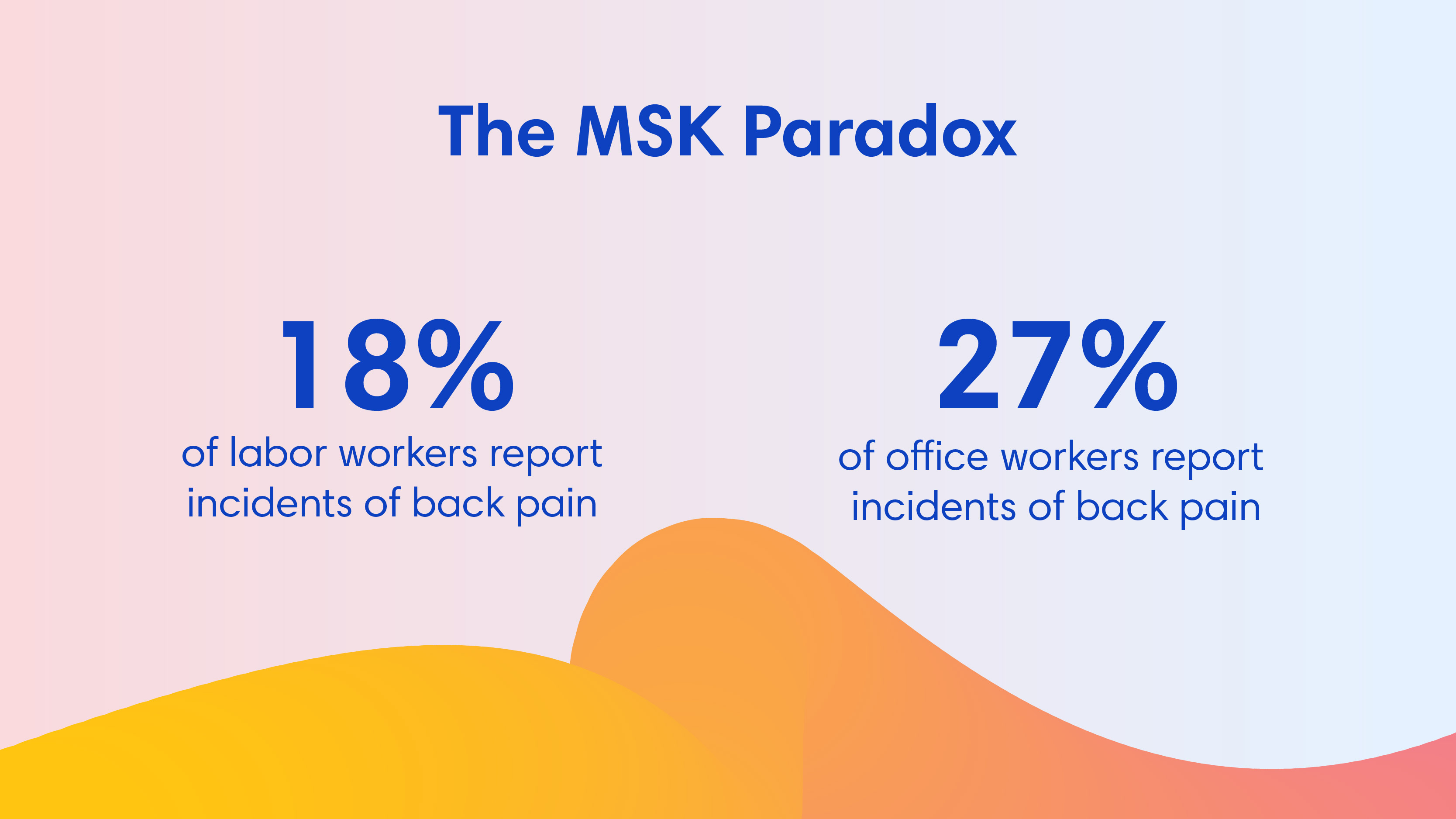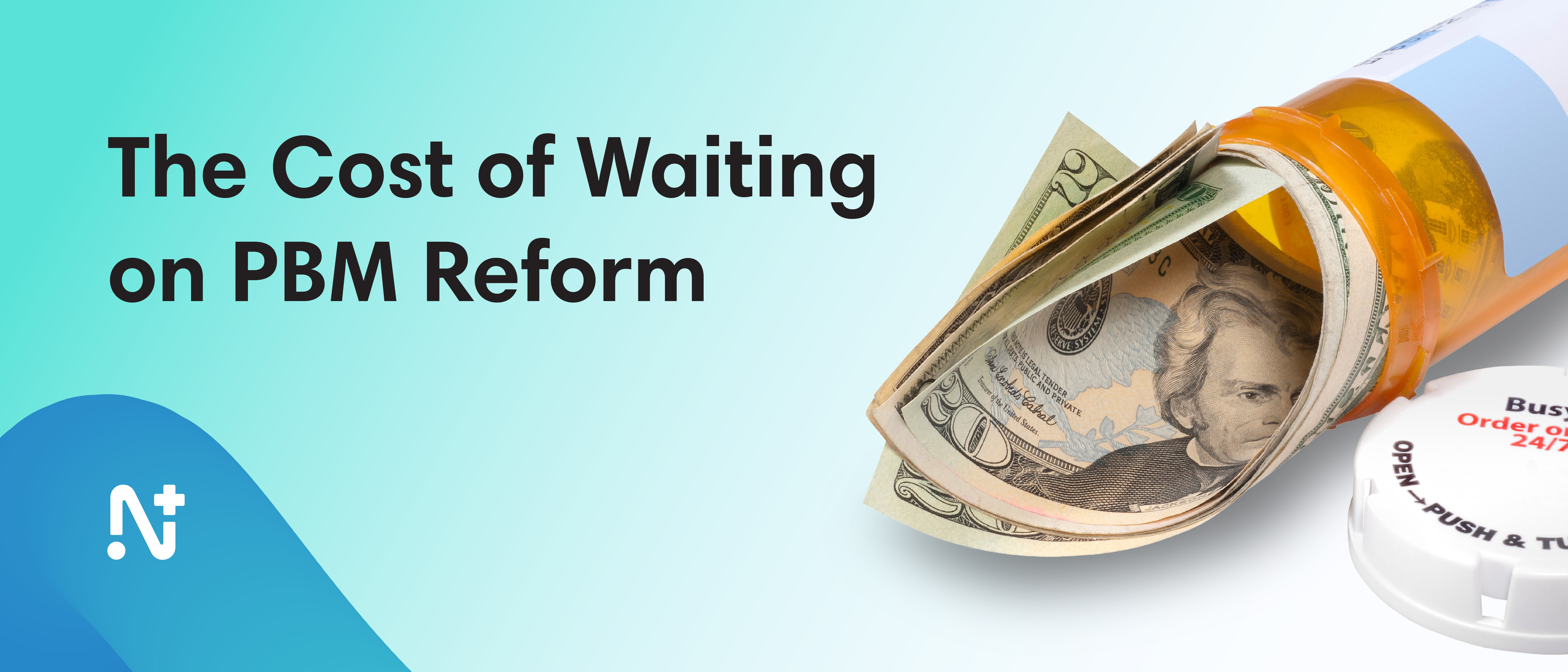The MSK Paradox: Office Workers Are Outpacing Laborers in Musculoskeletal Issues

Think back pain is a blue-collar problem? Think again.
New data from Nomi Health reveals a counterintuitive trend: white-collar employees, ie. those in office-based, professional roles, report significantly higher rates of musculoskeletal (MSK) disorders than their blue-collar counterparts.
In a national analysis of 435 employers, employees behind desks showed 38% higher MSK rates than skilled laborers. Across the board, 27% of office workers report incidents of back pain, compared to just 18% in physical jobs.

This is the MSK Paradox. And it challenges decades of assumptions about workplace health.
When Behavior Beats Stereotype
Companies have long treated job titles as proxies for health risks. Construction workers get injured. Office workers get stressed. Retail workers have high turnover. But today’s workforce doesn’t fit those neat categories. And neither does their healthcare use.
To better inform healthcare strategy, Nomi Health developed a data science model that moves past industry codes, job titles, and employer stereotypes, to focus on healthcare behavior and consumption. The model analyzed healthcare engagement across more than 400 companies and found that workforce behavior grouped companies into nine distinct archetypes.
The result: a 95.4% match rate between each company’s behavior and its assigned archetype.
Nine Archetypes. Three Behavior Families. One Smarter Benchmark.
These archetypes go beyond where people work to reveal how they use care, as we see. the MSK paradox.
Nomi's model surfaces another surprising trend: high salaries don’t always signal better social determinants of health (SDoH).
The Economic Insecurity Paradox
It’s easy to assume that high salaries lead to financial stability and social well-being. But the data tells a different story.
Finance workers earn nearly three times more than retail employees: $131,665 vs. $46,448. Yet they also score worse on economic insecurity risk and overall SDoH scores (Social Determinants of Health Risk).
- Economic insecurity score: 41.8 (finance) vs. 38.8 (retail)
- Overall SDoH risk score: 40.4 (finance) vs. 38.6 (retail)
(Higher numbers indicate greater barriers.)
At the same time, finance workers have better access to healthcare and digital services, highlighting the layered, and sometimes contradictory, reality of social risk.

This finding turns a core assumption on its head: that income predicts security. In reality, job type and work environment create social patterns that salary can’t explain.
Behavior tells the real story. Income is just a subplot.
Why This Matters
Most employers still compare themselves to others in their industry. Manufacturers benchmark against other manufacturers. Tech against tech. But that broad-brush approach hides what’s really happening inside the workforce.
Two employers might share an industry code and headcount but have completely different care patterns. One might be full of “Proactive Care Consumers” who demand flexibility and digital tools. The other might be “Healthcare Pragmatists” who care more about efficiency and cost.
When your strategy ignores those differences, your outcomes suffer. You overspend on the wrong programs. You underinvest in the right interventions. And you miss the chance to improve workforce health.
The Strategic Edge: Behavior-Driven Benefits
Nomi’s archetype model delivers three immediate advantages for forward-looking employers:
1. Speed to strategy: Identify your healthcare archetype in minutes, not months. Get early visibility into cost drivers and utilization patterns, without waiting for year-end claims.
2. Precision targeting: Benchmark your performance against companies that behave like yours, not just those that share your label.
3. Predictive planning: Design your next moves based on the proven behavioral patterns of similar employers, even while deeper analysis is still underway.
Employers using archetype-driven strategy are already optimizing for what’s next, while others are still reviewing last year’s data. Understanding healthcare behavior helps you move faster, plan smarter, and connect benefits to behavior.
The takeaway?
Don’t just update your benefits. Upgrade your lens.
See What’s Driving Your Data
The MSK paradox is just the beginning.
Uncover the full story behind your healthcare data at g.nomihealth.com




